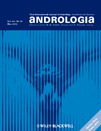Treatment of premature ejaculation by glans penis augmentation using hyaluronic acid gel: a pilot study
Summary
Premature ejaculation (PE) is by far the most common male sexual complaint, with millions of men affected all over the world. It is estimated that up to 20–30% of all men may be suffering from various forms of PE. A variety of filler materials are widely used nowadays for soft tissue augmentation. The appropriate filler can restore symmetry, volume and create a smooth skin surface The aim of this pilot study was to evaluate the therapeutic effect of hyaluronic acid gel injection in patients with PE. Sixty men with self-reported PE who were referred to our outpatient andrology clinic (between January 2007 and January 2008) were included in this study. Participants were randomly assigned using random sampling numbers into two distinct groups. Group A (n = 30) received a single injection of 2 ml of hyaluronic acid gel (Hyalift 3.5% micronised hyaluronic acid) using the previously described fan technique. Group B (n = 30) received a single injection of 2 ml of hyaluronic acid gel using the multiple puncture technique. Twenty-three patients (46.9%) received injection by the fan technique, while 26 patients (53.1%) received it through the multiple-point technique. The mean intravaginal ejaculation latency time (IELT) increased significantly from 2.12 ± 1.16 to 7.71 ± 7.86 min, after 1 month of injection and then dropped to 5.32 ± 3.52 min, but still remaining significantly higher than the baseline values. Results from our present pilot study demonstrated the usefulness of the application of hyaluronic acid dermal fillers in the treatment of PE; however, further investigations in large cohorts with longer follow-up are definitely needed to obtain more consistent results.




